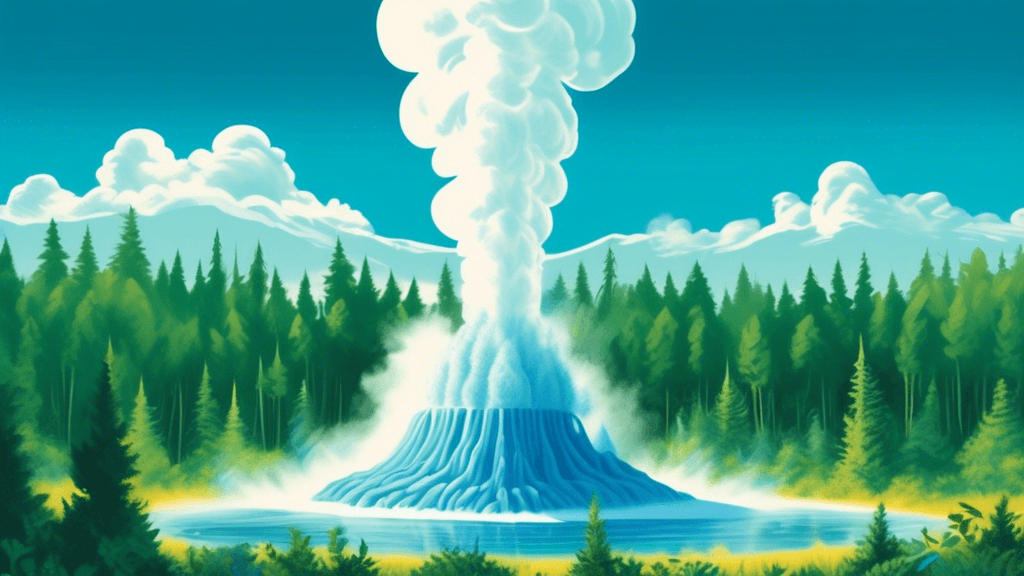
Exploring the Magic of Geysers: Nature’s Thermal Wonders
Share
The Enchanting World of Geysers
Imagine standing on a boardwalk, the air tinged with the smell of minerals, as you witness a tower of steam and water shooting dramatically into the sky. This is the awe-inspiring spectacle presented by geysers, nature's thermal wonders. But what exactly are these fascinating natural features, and how do they function? Let's dive into the mystifying world of geysers, explore their mechanisms, and understand their role in our ecosystem.
What is a Geyser?
Geysers are hot springs characterized by sporadic and violent eruptions of water and steam. This spectacular phenomenon occurs when underground water is heated by geothermal forces and builds pressure until it forcefully ejects above the surface. Understanding the science behind geysers offers a window into geothermal activity, one of Earth’s many intriguing natural processes.
How Do Geysers Work?
The functioning of a geyser is akin to a natural pressure cooker. Water seeps into the earth where it is heated by magma. This hot water tends to rise through cracks in the rocks, but is trapped by cooler, impermeable rocks above. As the water at the bottom reaches its boiling point, it begins to vaporize into steam. However, the water above which is under high pressure, allows the temperatures to exceed 100°C without boiling. When the steam expands enough to push the water upwards, the pressure decreases and the superheated water explodes upwards, resulting in a geyser eruption.
Where Can You Witness These Geothermal Marvels?
Geysers are relatively rare phenomena because they require a precise set of geological conditions to form: heat, water, and fortuitous plumbing. Most of the world's geysers are found in just a few countries. Here are some of the most notable locations:
- Yellowstone National Park, USA: Home to approximately half of the world's total number of geysers, including the famous Old Faithful.
- The Geysir Geothermal Area, Iceland: Known for the Great Geysir, which lent its name to all such phenomena, and its highly active neighbor, Strokkur.
- Valley of Geysers, Russia: Situated on the Kamchatka Peninsula, this geyser field is the second-largest concentration of geysers in the world.
These sites not only provide a visual spectacle but are also significant for scientific research and tourism.
Environmental Importance of Geysers
Geysers are not just spectacular natural phenomena; they play an essential role in their ecosystems. The unique conditions around geothermal sites are home to special communities of organisms that thrive in extreme environments, known as extremophiles. These organisms help scientists understand more about evolutionary biology and the adaptability of life.
Furthermore, geysers and their geothermal activity are potent natural laboratories for studying Earth’s geological processes and the possibilities of renewable energy sources. Geothermal energy, derived from the natural heat of the Earth, is a clean, sustainable resource that can help reduce our dependence on fossil fuels.
Conservation Challenges
Despite their resilience to natural conditions, geysers are highly sensitive to human activities. Pollution, geothermal drilling, and water diversion can alter the delicate balance required to maintain a geyser’s activity. Therefore, conservation efforts are crucial to preserving these extraordinary natural features for future generations.
Dr. Jane Johnson, a leading geologist specializing in geothermal phenomena, states, “Protecting geothermal areas isn't just about preserving these spectacular natural features. It's also about maintaining the balance of ecosystems and continuing to explore sustainable energy solutions that such environments offer.”
Experience the Magic Yourself
If you ever have the opportunity, visiting a geyser field is a must. The experience of watching a geyser erupt is truly a testament to the dynamic nature of Earth. It reminds us that our planet is alive and constantly evolving. However, while enjoying these marvels, it is essential to respect the natural environment and adhere to park rules and guidelines to minimize human impact.
Conclusion
Geysers are fascinating natural phenomena that offer more than just their visual splendor. They provide insights into Earth's geological machinery, potential sources for sustainable energy, and are crucial components of their ecological niches. As enthusiasts of nature’s artistry, it is our responsibility to advocate for and participate in the conservation of these thermal wonders. Let us be stewards of the Earth, protecting its beauty and resources for the enrichment of all species, including our own.
Are you ready to explore the magic of geysers and take a step further in appreciating and protecting our natural world?





